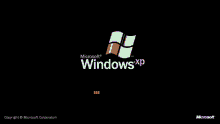


If you don’t want to disturb your customers while they digest the gist of the email, try animating only a part of the GIF. The GIF file should be no larger than 2.5 MB so that it quickly loads on the reader’s screen and animates seamlessly.ħ. If any frames appear to be freezing, examine the GIF file size and, if possible, reduce it. Make sure a GIF loads quickly and animates smoothly before you upload it. However, it’s best to create a custom GIF that reflects your marketing message.Ħ. It can be tempting to use popular GIFs because of their attention-grabbing power. Create Custom GIFs Instead of Using What’s Available Online. Again, it’s best to conduct thorough research about your target audience.ĥ. If it doesn’t, it may drive customers away rather than luring them in. A GIF must contribute to your content’s overall purpose, whether it’s to inform or entertain. Don’t Add a GIF without a Purpose or Context. Your GIF must contain a message of what they should do after reading the email, whether it’s following a link or viewing your offer.Ĥ. One of the best uses of GIFs, aside from demonstrating your product or service, is to guide the reader to a CTA. Always ask yourself if a GIF is appropriate for your audience before using it. Fortunately, almost all email clients can send and receive emails with GIFs, except for Outlook 2007 to 2016.Ģ. When sending an email, make sure that the recipients use email services that support GIFs. 7 Things to Remember When Adding a GIF to an Emailġ. Because you aren’t limited to one static image, it can make your audience curious using multiple teasers in just one animation. GIFs are great for previewing things to come, such as an upcoming show or product.

GIFs can help introduce innovative products that people might be unfamiliar with and showcase their unique features in seconds.


 0 kommentar(er)
0 kommentar(er)
